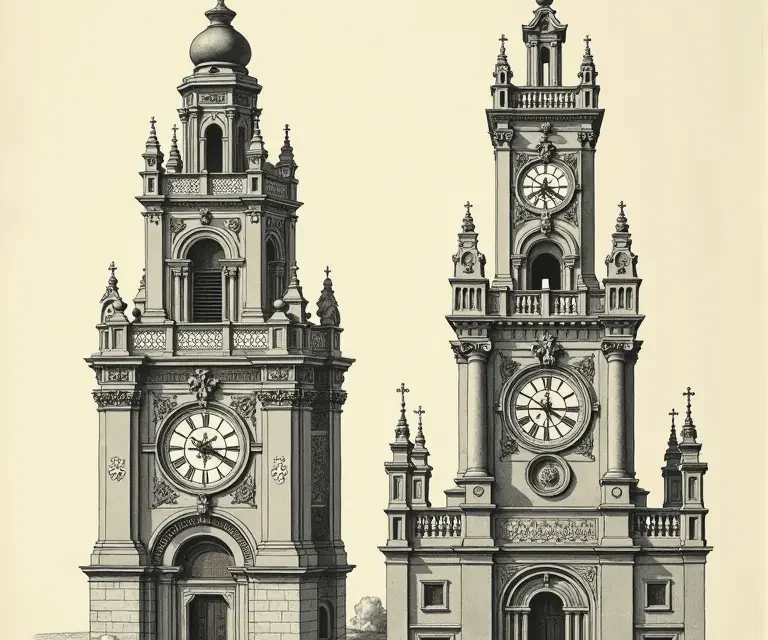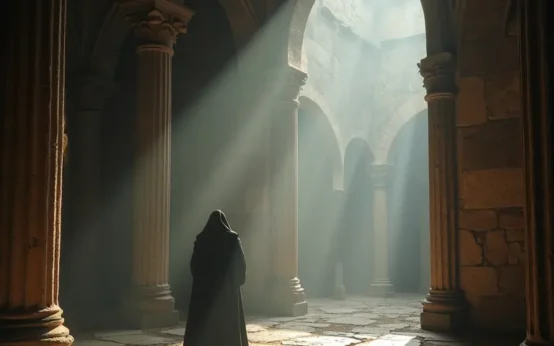Clock towers. They punctuate our skylines, stand as silent witnesses to history, and offer a reassuring rhythm to our days. But beyond their aesthetic appeal and practical function, clock towers embody a fascinating intersection of mathematics, engineering, and societal values. This article delves into the surprisingly complex calculus – both literally and figuratively – that underpins these iconic structures, exploring how geometry, mechanics, and a healthy dose of civic pride have combined to create some of the world’s most beloved landmarks.
A History Etched in Time
While sundials marked time for millennia, the mechanical clock didn’t appear until the late 13th century. Early clock towers weren’t about precision; they were about presence. They were statements of power, wealth, and community. The first public clocks were often housed in church towers, signaling prayer times and becoming integral to medieval life. These early mechanisms were enormous, relying on falling weights and intricate gear systems. The placement of these clocks high above the towns and cities offered a visible symbol of order and control.
The development of the escapement mechanism was crucial. This ingenious device regulates the release of energy from the falling weight, allowing the clock to tick at a consistent rate. Different escapement designs, like the verge escapement, were refined over centuries, each impacting the accuracy and size of the clock. As clockmaking evolved, it moved beyond the monasteries and into the hands of skilled artisans and, eventually, dedicated clockmakers. The 17th and 18th centuries saw a proliferation of clock towers, often becoming integral components of town halls, universities, and other public buildings.
The Geometry of Gearing
At the heart of every clock tower lies a complex system of gears. These aren’t just randomly arranged metal teeth; their design is deeply rooted in geometry. The ratio of teeth on different gears dictates the speed at which they turn, ultimately translating the slow descent of the weight into the precise movement of the clock’s hands. Understanding gear ratios requires a grasp of basic mathematical principles.
For example, consider a simple gear train. If Gear A has 20 teeth and Gear B has 40 teeth, then Gear B will rotate half as fast as Gear A for every full rotation. This principle is applied repeatedly throughout the clock mechanism, reducing the speed of the weight’s descent to the desired rate for the hour, minute, and second hands. The design of the gear teeth themselves – their involute shape – is also mathematically significant. The involute curve ensures a constant velocity ratio, minimizing friction and wear. Without a precise geometric understanding, these gears wouldn’t mesh smoothly, and the clock would quickly fall into disrepair.
The placement of these gears also has geometrical considerations. They are arranged to minimize stress and strain on the frame of the clock, ensuring the stability of the entire mechanism. The size and material of the gears are calculated to withstand the constant load and prevent deformation over time. This is where practical engineering meets applied mathematics.
Calculus and the Pendulum
While early clocks relied on oscillating balance wheels, the introduction of the pendulum in the 17th century, notably by Christiaan Huygens, dramatically improved accuracy. The pendulum’s swing is governed by gravity and its length. The period (the time it takes for one complete swing) is directly proportional to the square root of its length. This relationship is expressed mathematically as:
T = 2π√(L/g)
Where:
- T is the period
- π (pi) is a mathematical constant approximately equal to 3.14159
- L is the length of the pendulum
- g is the acceleration due to gravity
This formula demonstrates how a small change in the pendulum’s length significantly affects its timing. Clockmakers meticulously adjusted the pendulum’s length to achieve the desired accuracy. However, the pendulum’s swing isn’t perfectly isochronous (taking the same time for each swing) due to factors like air resistance and the increasing angle of swing. This is where more advanced calculus comes into play.
Calculus allows for the analysis of the pendulum’s motion as a harmonic oscillator, enabling clockmakers to understand and compensate for these imperfections. The use of cycloidal pendulums, designed to maintain isochronism even with larger swings, showcases the sophisticated application of calculus in clock design.
The Tower Itself: Structural Integrity and Geometric Design
The tower that houses the clock mechanism isn’t simply a supporting structure; it’s a feat of engineering in its own right. The height of the tower is a crucial factor, as it affects the weight-lifting capacity required and the stability of the entire structure. Taller towers require stronger foundations and more robust materials to withstand wind loads and gravitational forces.
The geometry of the tower – whether it’s square, round, or octagonal – impacts its structural integrity. Arches, buttresses, and other architectural features are employed to distribute weight and prevent collapse. Calculating the stresses and strains on different parts of the tower requires a deep understanding of statics and mechanics. The materials used – stone, brick, concrete, or steel – also play a critical role. Each material has different properties, influencing the tower’s ability to withstand various forces.
Consider the famous Elizabeth Tower (often referred to as Big Ben) in London. Its design incorporates a slight inward slope towards the top, a deliberate feature to enhance stability and resist wind pressure. This seemingly subtle geometric adjustment is a testament to the careful calculations that went into its construction. The tower’s weight is distributed carefully to minimize stress on the foundations and ensure its long-term durability.
Civic Pride and the Public Face of Time
Clock towers have always been more than just timekeeping devices. They represent a community’s identity, its values, and its aspirations. In the 19th and 20th centuries, as towns and cities grew, clock towers became symbols of civic pride, often dominating the skyline and serving as focal points for public life.
The construction of a clock tower was often a significant undertaking, funded by public donations or local government initiatives. The clock’s face itself became a canvas for artistic expression, adorned with intricate designs and inscriptions. The chiming of the clock, often on the hour, became a familiar and comforting sound, marking the rhythm of daily life.
The competition to build the tallest or most elaborate clock tower often reflected a sense of local rivalry and a desire to showcase a town’s prosperity and technological prowess. Clock towers were seen as emblems of progress and modernity, signaling a commitment to order, efficiency, and civic responsibility. The desire to create something lasting and beautiful often drove the ambition behind these projects.
Modern Clock Towers: Maintaining Tradition in a Digital Age
In the age of digital clocks and smartphones, the relevance of clock towers might seem diminished. However, they continue to hold a special place in our hearts. Many historic clock towers have been meticulously restored and preserved, serving as reminders of our past and testaments to the ingenuity of earlier generations.
Modern clock towers, while often incorporating digital technology for accuracy, often retain the aesthetic elements of their historical counterparts. They continue to serve as landmarks and symbols of civic pride. The continued appreciation for clock towers demonstrates our enduring fascination with time, geometry, and the human desire to create structures that are both functional and beautiful.
The principles that governed the construction of these magnificent structures remain relevant today. Understanding the mathematics and engineering behind clock towers allows us to appreciate the skill and creativity of the artisans and engineers who brought them to life. It’s a fascinating blend of scientific precision and artistic expression.
Further Exploration: Consistent Patterns Throughout History
The attention to detail and precise craftsmanship evident in clock towers mirrors similar dedication found in other historical fields. The meticulous record-keeping of historical signatures, for instance, reveals a surprising consistency in style and personal identity – a field explored in the science of signature authentication. Similarly, the careful preservation of ice for commercial and practical purposes, as detailed in the history of ice harvesting, demonstrates a consistent application of scientific principles and logistical planning. Even seemingly frivolous objects, like antique fans, reveal a consistent symbolism related to language, status, and Victorian courtship, as outlined in the symbolism of antique fans. The intricate mechanisms of historical buttonhooks, as discussed in the science of buttonhooks, also highlight a focus on function and design. And finally, the complex knot-based record-keeping systems like the Quipu, explored in the science of Quipu, demonstrate the consistent human impulse to systematize information and preserve knowledge.
Conclusion
The clock tower stands as a powerful symbol of human ingenuity and a testament to the enduring appeal of mathematics, engineering, and civic pride. From the intricate geometry of the gears to the structural integrity of the tower itself, every aspect of these iconic structures reflects a careful consideration of scientific principles and artistic expression. As we look up at these time-honored landmarks, let us appreciate not only their beauty but also the fascinating calculus that lies beneath their surface.


 The Curious Acoustics of Historical Echo Chambers: Resonance, Ritual, and Revelation
The Curious Acoustics of Historical Echo Chambers: Resonance, Ritual, and Revelation  The Surprisingly Consistent Geometry of Bird Nests – Nature’s Architectural Blueprints
The Surprisingly Consistent Geometry of Bird Nests – Nature’s Architectural Blueprints  The Curious Math Behind Ancient Building Proportions – Harmony in Stone & Structure
The Curious Math Behind Ancient Building Proportions – Harmony in Stone & Structure  The Surprisingly Consistent Geometry of Spiderwebs: Nature’s Engineering Marvel
The Surprisingly Consistent Geometry of Spiderwebs: Nature’s Engineering Marvel  The Geometry of Everyday Objects: Hidden Math All Around Us
The Geometry of Everyday Objects: Hidden Math All Around Us